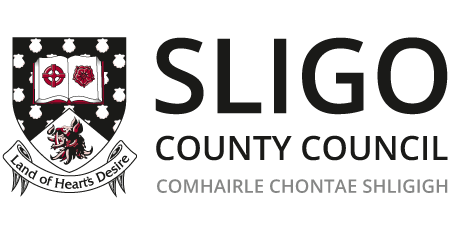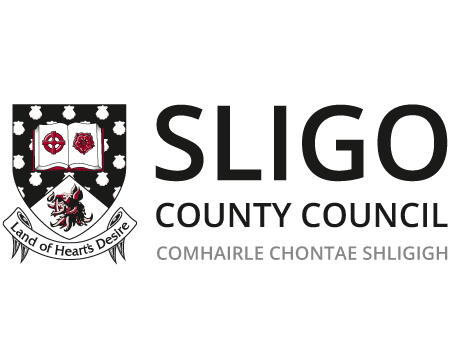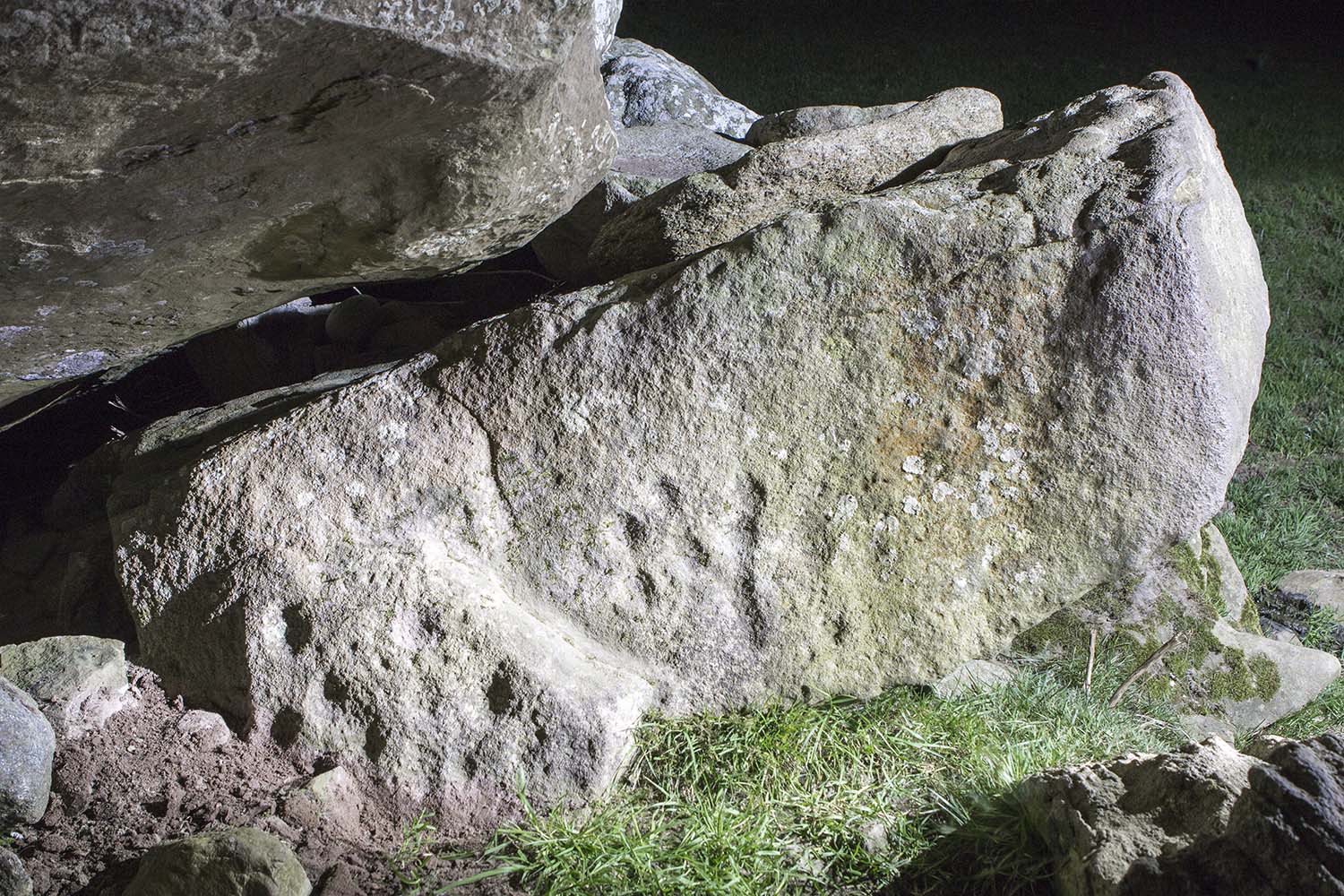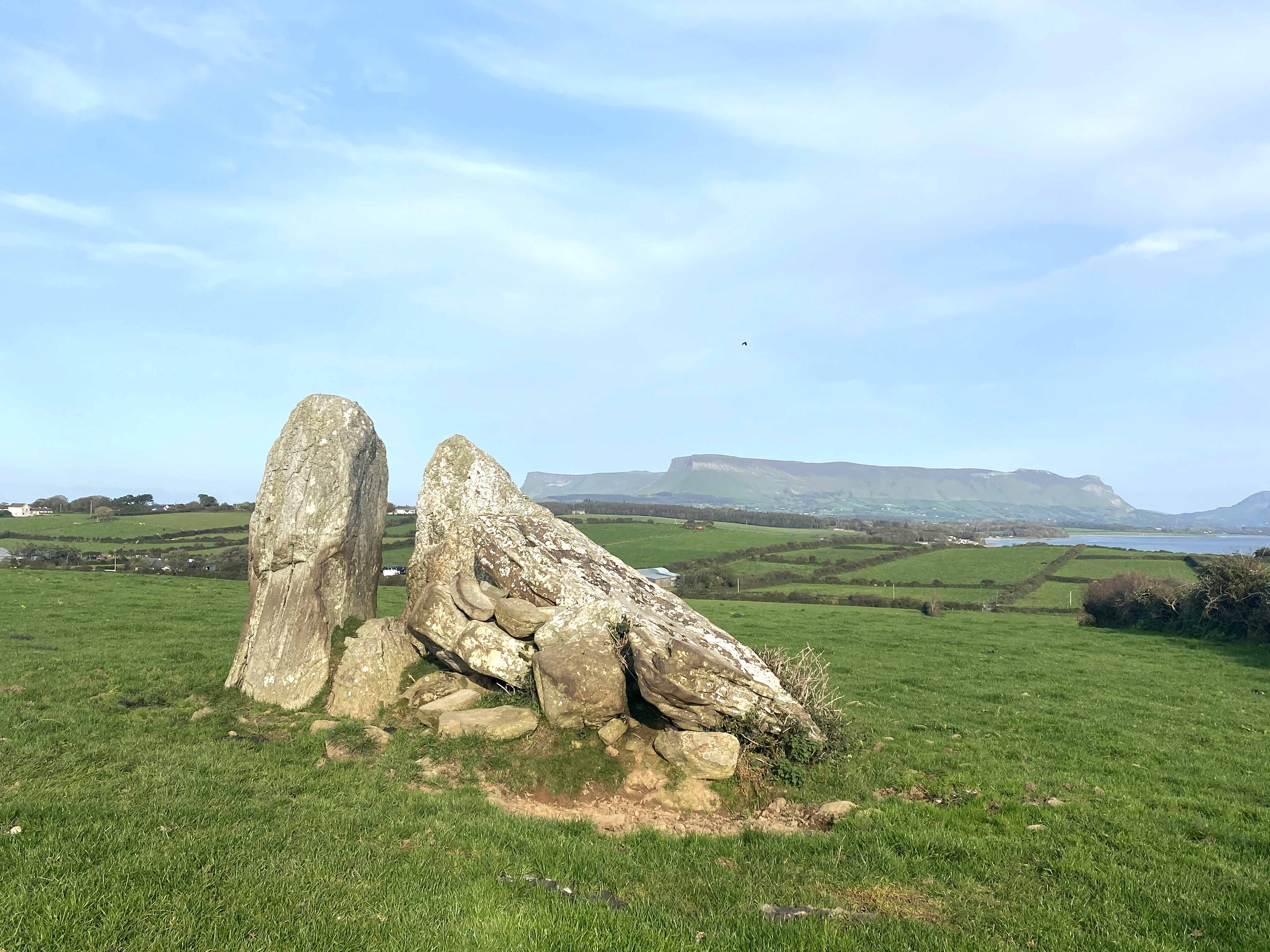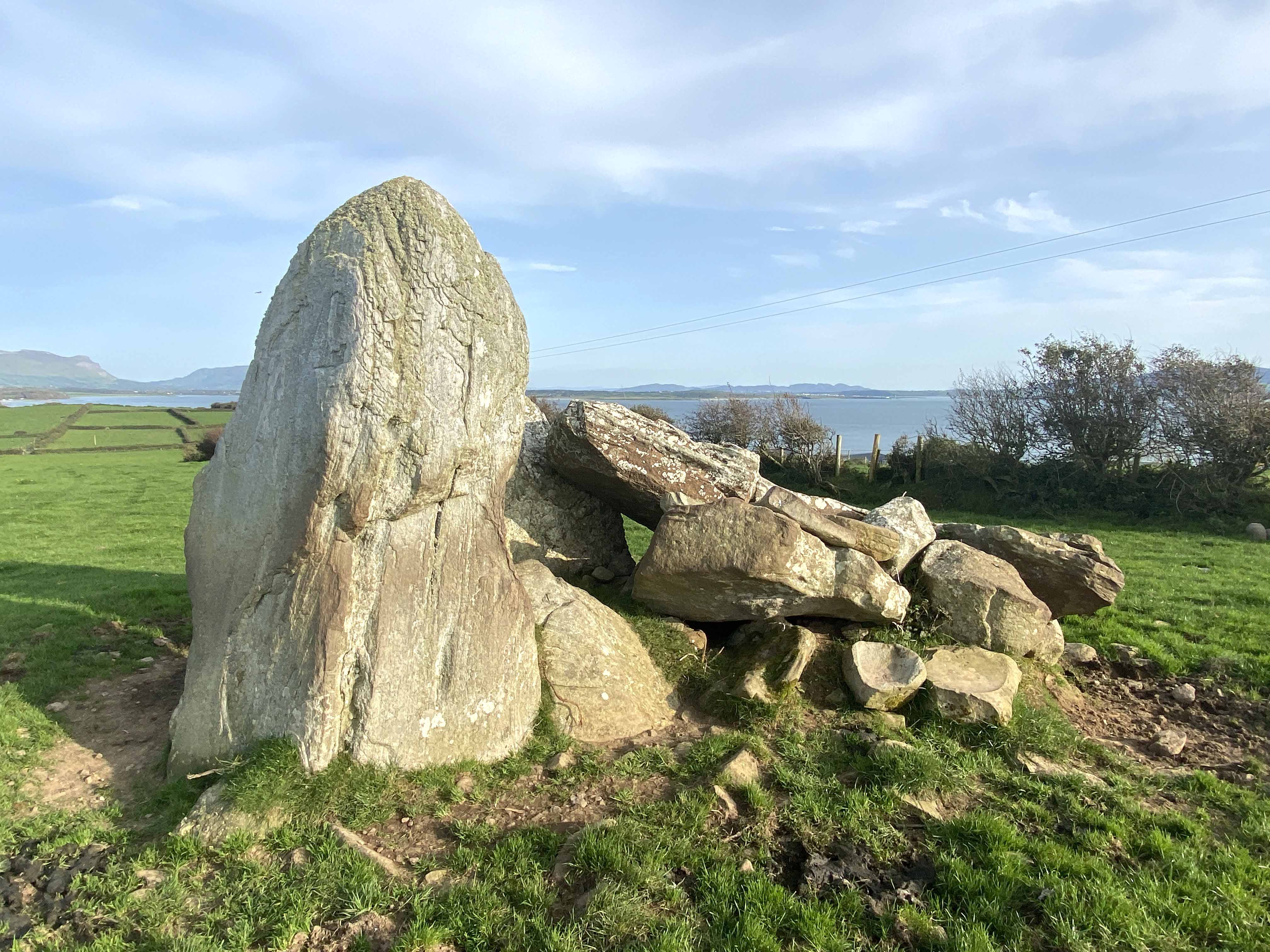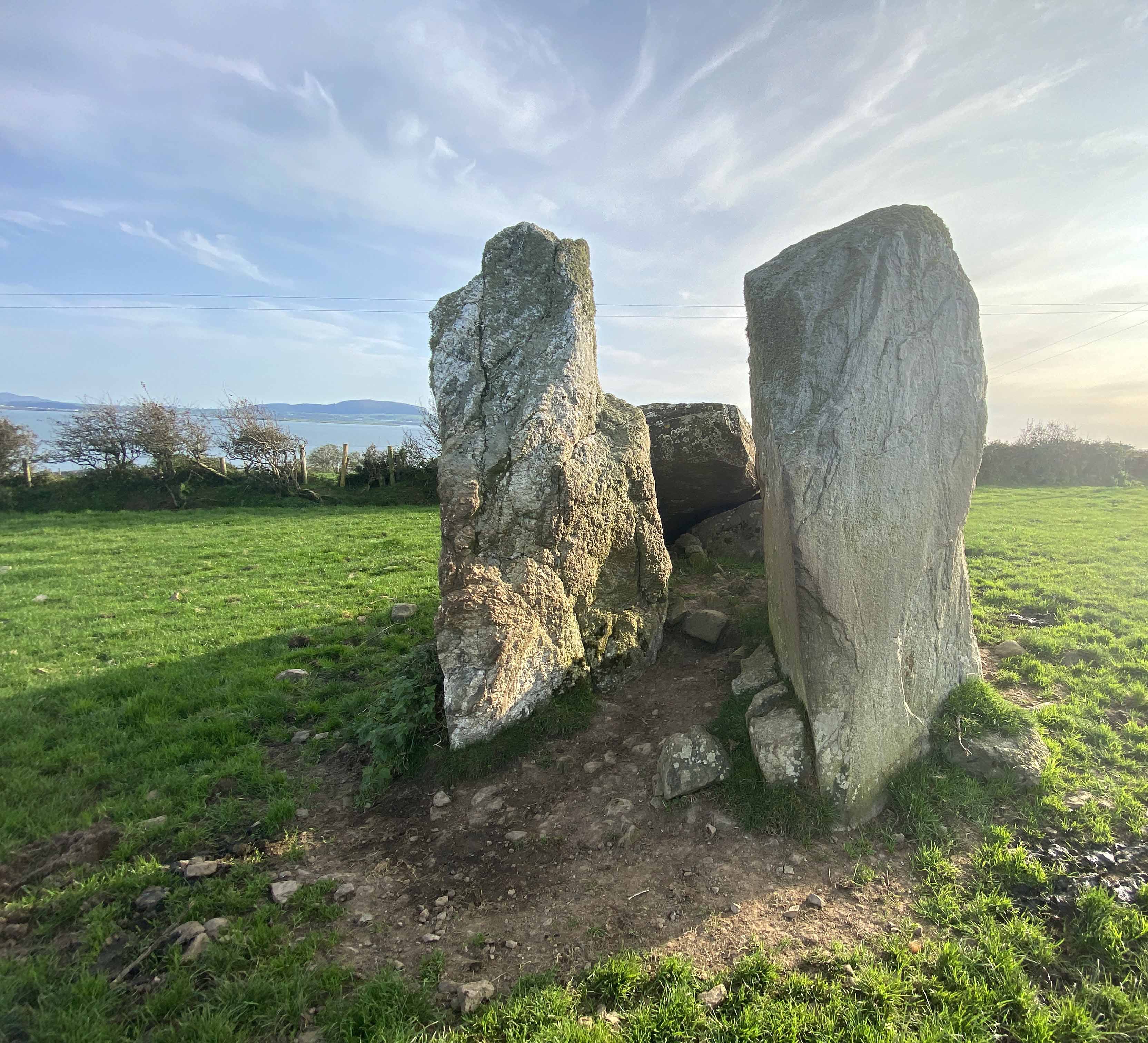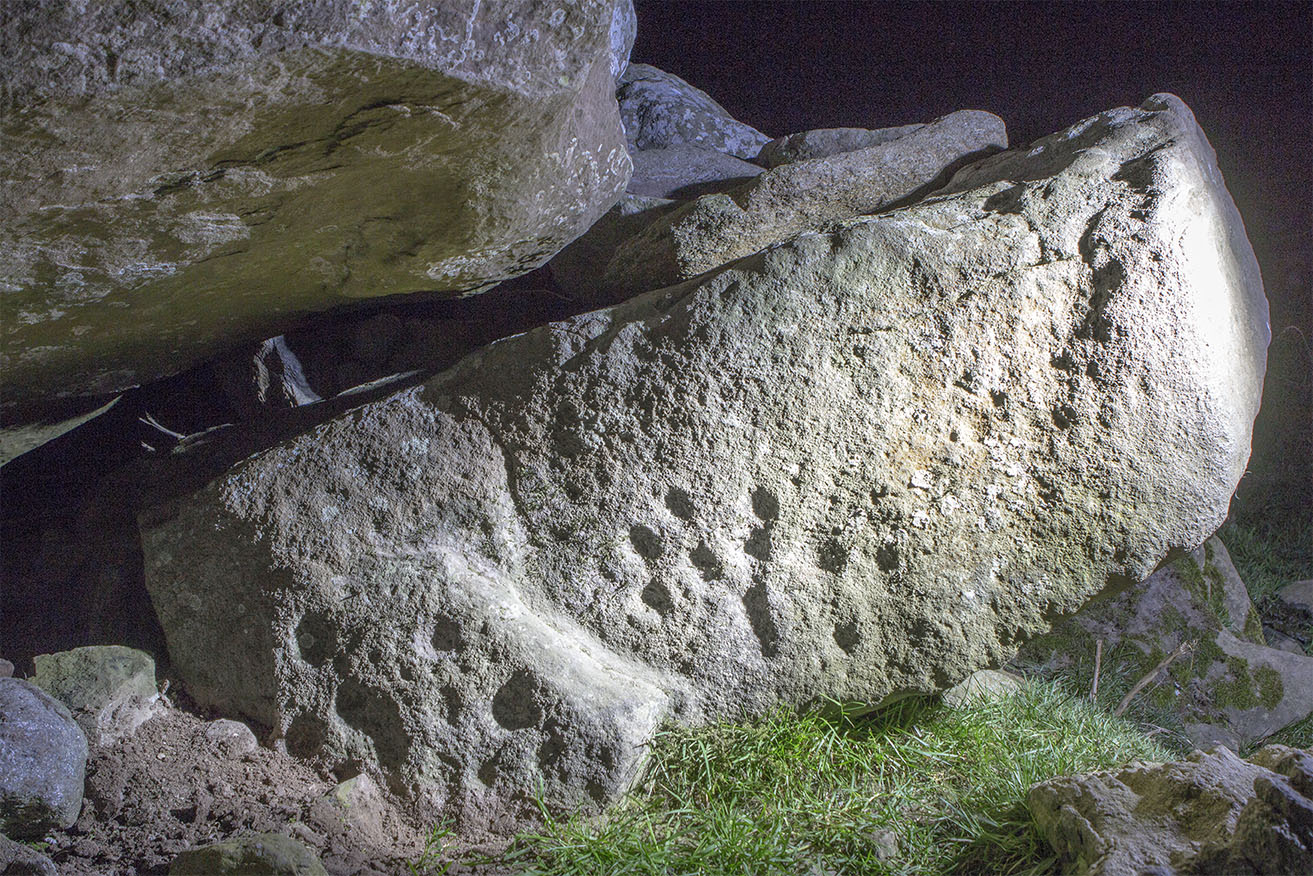A rare find of prehistoric rock art has been found on a portal tomb in north Co. Sligo.
Rare Prehistoric Rock Art
Rare Prehistoric Rock Art Discovered in Co. Sligo
During the recording of a video interview for the Sligo Community Archaeology Project at the Cloghcor Portal Tomb with landowner Leo Leydon, Community Archaeologist Tamlyn McHugh spotted the rock art on a large stone boulder used to support the capstone of the monument. Returning after dark to the tomb in the company of photographer Ciaran McHugh the rock art became more apparent in the correct torch light. The images taken by Ciaran show a series of cupmarks incised into the surface of the stone, and evidence of a rosette design. The rising sun on the summer solstice shines through the two portal stones into the chamber of the Cloghcor Portal Tomb; this deliberate alignment may have been designed to illuminate the rock art within.
To date, rock art directly on portal tombs has been relatively unknown, with only a small number of other examples found in Ireland. Christiaan Corlett National Monuments Service District Archaeologist described the discovery as
“a very exciting find because rock art on portal tombs is rare”.
Portal tombs date to the Neolithic (4000BC-2500BC) and are one of the four classes of megalithic tombs in Ireland which include passage tombs, court tombs and wedge tombs. Portal tombs, or portal dolmens, comprise two portal stones and a backstone which support a large captone in a tripod design. The most well know example is the iconic Poulnabrone Portal Dolmen in Co. Clare.
The discovery of the rock art on Cloghcor Portal Tomb has been one of the highlights of the Sligo Community Archaeology Project which has been underway since January 2018. The ‘Sligo Community Archaeology Project’ is a key action of Sligo Heritage Forum and an action of the County Sligo Heritage Plan 2016 – 2020, it is funded by Sligo County Council in partnership with The Heritage Council. The project is being delivered by Tamlyn McHugh of Fadó Archaeology.
The project seeks to increase awareness and appreciation of the archaeology of Sligo by providing a platform for public engagement with archaeology through seminars, field trips, workshops, and social media posts on the popular Facebook page ‘Sligo Community Archaeology Project’. This has resulted in the discovery of new archaeological sites and artefacts in the county and emphasises the importance of grassroots community archaeology where the public can be instrumental in making significant discoveries.
Tamlyn works with members of the public in recording and reporting their discoveries to the relevant heritage bodies. In April, two previously unrecorded shell midden sites were found by residents Eimear Healy and Daithi Bradley in Rosses Point. Both sites have been added to the Archaeological Survey of Ireland. Discoveries of archaeological monuments should be reported to the Archaeological Survey of Ireland by using the monument report form available on the National Monuments Service website www.archaeology.ie.
Another highlight of the project was the discovery in March 2020 of a rare Bronze Age stone pendant in Drumcliffe by 14-year-old Darragh McDaniel on the family’s land whilst digging a field drain. Darragh is no stranger to finding archaeology and has subsequently found a Bronze Age Fulacht Fia, these enigmatic sites are thought to be ancient cooking places. Numerous quern stones have been found including one which was brought ashore from Oyster Island by members of the North West Sea Kayaking Association. The objects were reported to the National Museum of Ireland and are safely deposited with the collections there.
Nessa O’Connor Archaeologist and Assistant Keeper of Irish Antiquities at the National Museum of Ireland, emphasised the importance of reporting objects
“this could be your contribution to your own local heritage and help ensure that objects and related information on their context in the landscape can be available to all as a source of new archaeological knowledge and as a research resource”.
The National Museum would ask that anyone who by chance comes across an object that they think may be of archaeological or historical interest, please report it to the National Museum of Ireland by email to antiquitiesdo@museum.ie or phone 01 677 7444.
Community groups and individuals interested in their local archaeological monuments are encouraged to contact Tamlyn McHugh, Sligo Community Archaeology Project at 086 8706529 or by email to info@fadoarchaeology.com.
